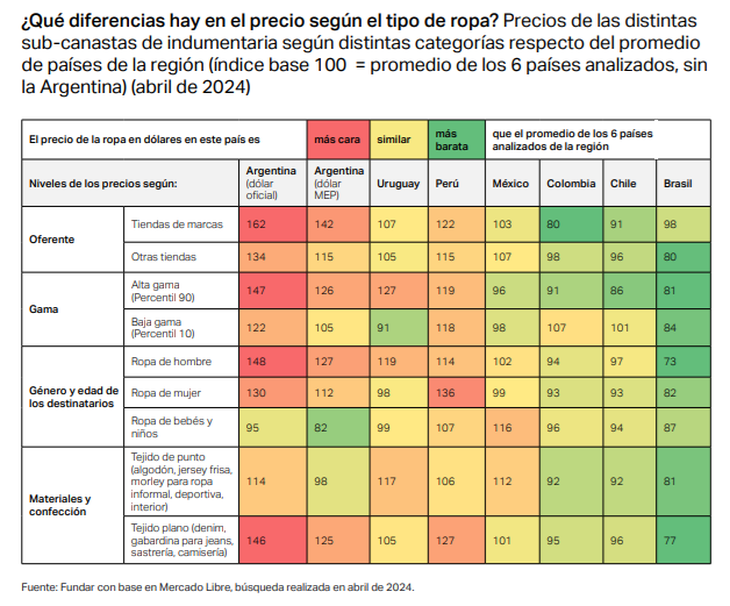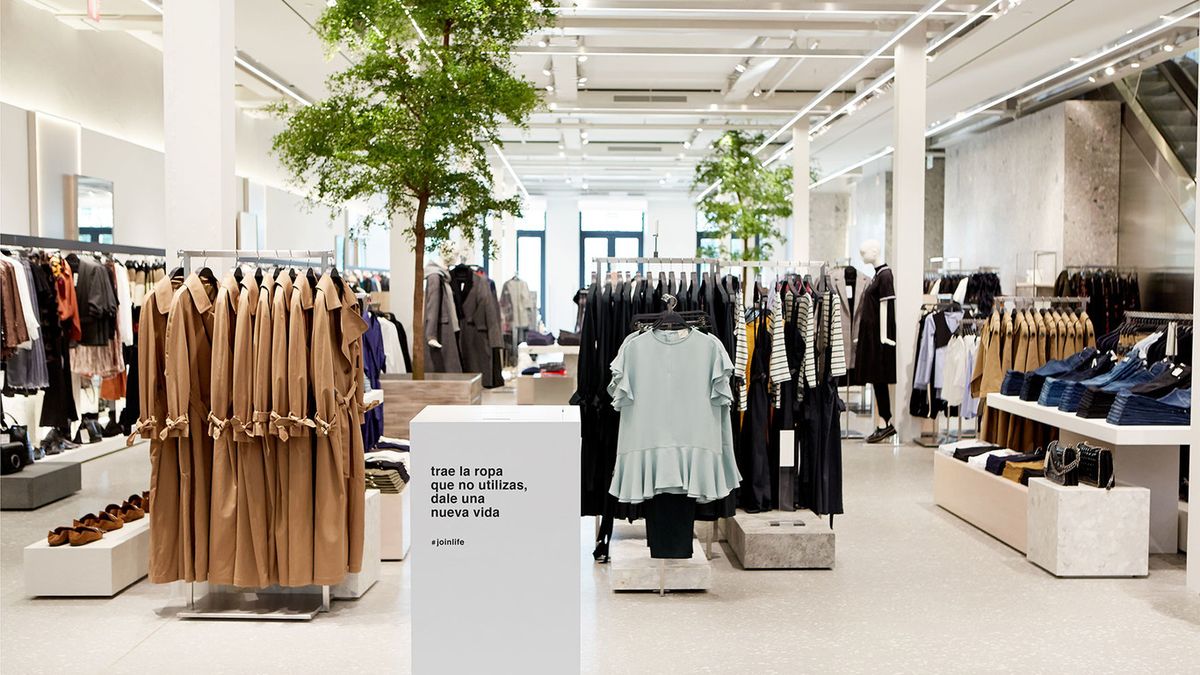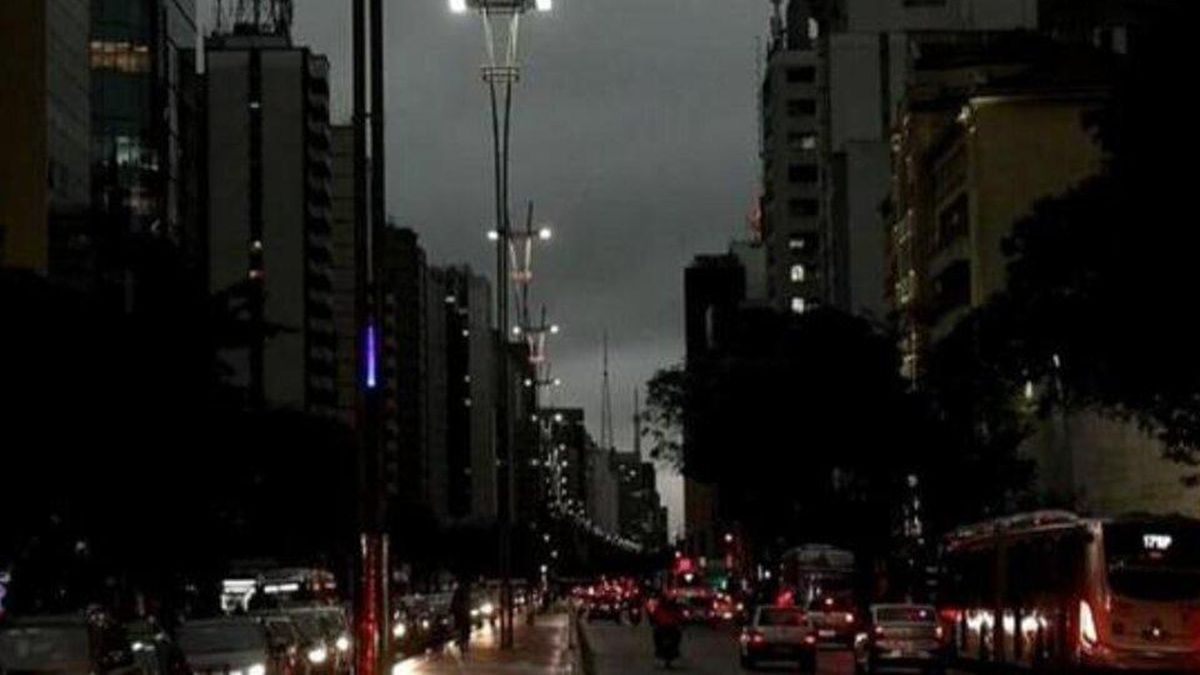Since the end of convertibility, The price of clothing in Argentina increased by 32% above the general inflation, while in the rest of the world the exact opposite occurred, Since clothing became cheaper in the same proportion as other goods and services in the economy. As a result, a basket of clothes currently costs almost 40% more compared to the average of the countries in the region, product, not only of tax pressure, but also of a combination of factors, such as marked protectionism, constant local macroeconomic and exchange rate instability, and a drop in productivity.
This is reflected in a report by Found, published this week, and prepared based on a survey of 390,000 prices of the 33 most important items of clothing out of the 77 consumed in Argentina. It showed a notable divergence, starting in 2002, between the dynamics of clothing prices at a local level and the global trend, and identified four main causes that explained this phenomenon.
The work in question reflects that, Although many Argentine textile manufacturers claim that prices are high due to taxes, There are clearly other factors that influence this dynamic.
The four reasons why Argentine clothing is one of the most expensive in the world
The first factor highlighted was the import barrier“Argentina had clothing tariffs similar to the world average in the 90s. While in the 2000s they went down around the world, here they went up. Today the average tariff is 33% (one of the highest in the world), and in the rest of the countries it is 8.5%,” he added. Daniel Schteingartdirector of Productive Planning at Fundar and one of the authors of the report.
The second element mentioned was the import taxeslike the COUNTRY TAX and the statistical rate, as well as others para-tariff policies which made it difficult to purchase products from abroad.
Thirdly, the role of the macroeconomic uncertainty which, according to historical evidence, has a greater impact on the price of goods than on services.
The last cause is also linked to the exchange rate instabilitybecause every time the real exchange rate or the gap between the official dollar and the parallel exchange rate increased, the value of goods rose above the general Consumer Price Index (CPI).
On the other hand, Fundar’s work also pointed out secondary factors, tied to the four main ones mentioned previously. Among them appeared the increases in the taxes on production which, according to the organization dedicated to the study, research and design of public policies, could be transferred to prices due to the existence of import barriersor the decline in productivity of the textile-clothing industry, derived from macro instability.
Clothing in Argentina “buys” twice as many goods as in the US
This combo generated that, as of April 2024, A basket of clothes costs 35% more than in the region, evaluated at the official exchange rate, and 16% more measured in MEP dollars. Since the official rate has since increased below inflation, it is to be expected that the 35% has increased.
Following the increase in the relative price of clothing, Fundar also stressed that Today, a garment in Argentina buys 94% more goods and services than a garment in the United States.In other words: a person who decides to save on clothing in Argentina can purchase almost twice as many goods and services, than a person who decides not to buy clothes in the North American country.
Fundar clothing prices 2.png
To give an idea of the magnitude of the number, in Brazil this ratio is 48%, in Mexico it is 36%, in Chile it is 25% and in Uruguay it is 14%. This explains why Argentines consume 22% less clothing than the rest of Latin Americansdespite the fact that they consume 40% more goods overall.
Argentine clothing among the most expensive in the world: the few exceptions
Although the general situation indicates that clothing is noticeably more expensive in Argentina than in other territories, the report noted some segments in which the opposite is true.
Fundar clothing prices.png

Indeed, Local prices are relatively higher for woven fabrics, high-end apparel and branded products.in the latter case being 62% higher than in the region.
On the contrary, Children’s clothes are cheaper than in other Latin American countries and knitted fabrics are only 14% more expensive.
In this sense, the economist Gustavo Ludmeranother of the report’s authors, He highlighted that 14 of the 33 items surveyed are cheaper within the country. “What do the clothes that are cheaper here have in common? They are mostly made from knitted fabrics.. The Argentine textile-clothing industry is more specialized in this type of products, which makes its production more competitive today,” he added.
In this regard, the textile sector specialist explained that the fact that the basket as a whole is relatively more expensive is due to the fact that Many products with a strong weight in consumer baskets, such as women’s jackets, actually have a high monetary value..
“Argentina has zero (or very little) local manufacturing capacity for some items. And it is there, in general, where the highest overpricing is verified and where almost all local demand is supplied by imports, both by Customs and by contraband or suitcases of tourists. So the question arises: Does it make sense to have high import tariffs where there is no local production? Is it not better to focus policy on competitive products?“, Ludmer said.
Source: Ambito




